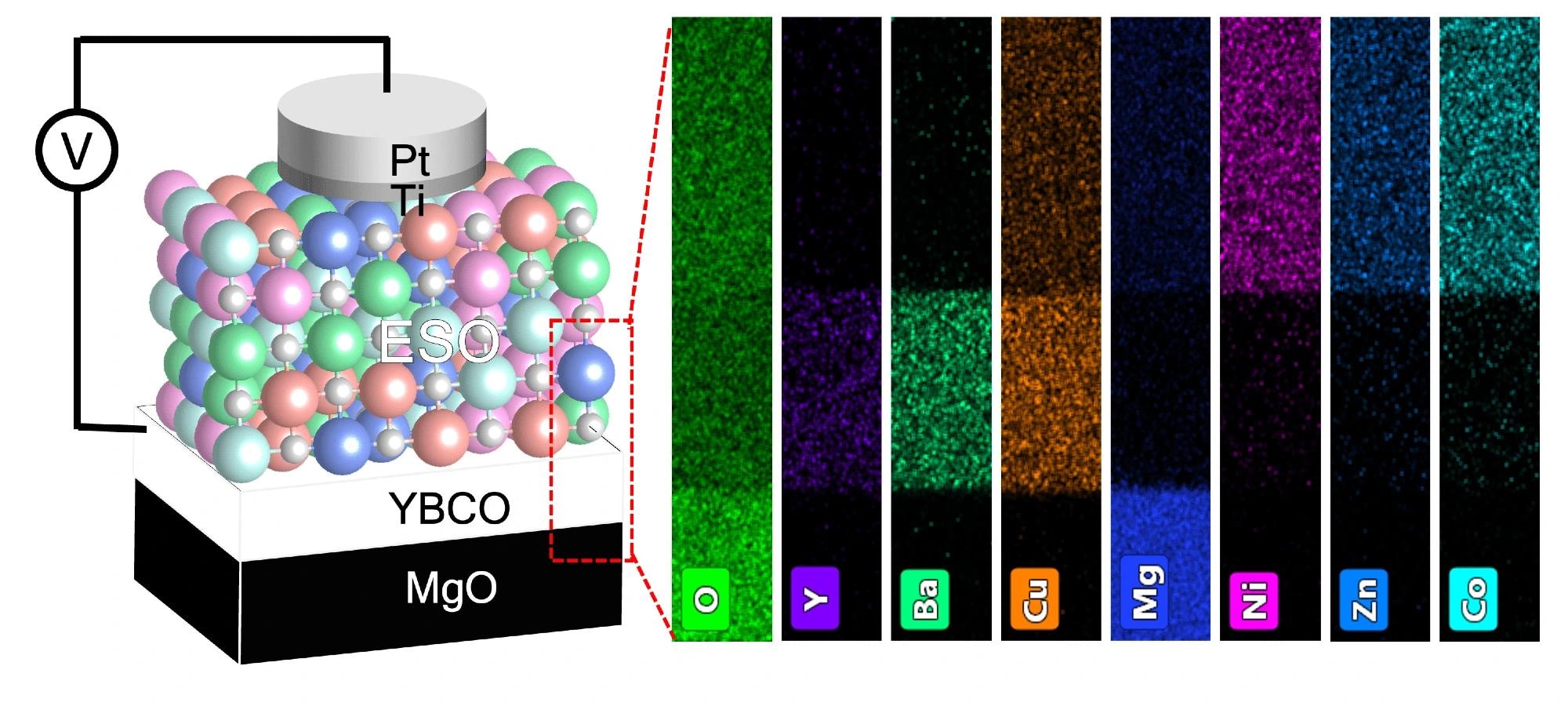An Oregon State University College of Engineering researcher has helped develop a new artificial intelligence chip that could improve energy efficiency six times over the current industry standard.
As the use of artificial intelligence soars, so does the amount of energy it requires. Projections show artificial intelligence accounting for half a percent of global energy consumption by 2027 – using as much energy annually as the entire country of the Netherlands.
 The device structure of ESO memristor. Each layer is composed of compositionally complex materials. Image provided by Sieun Chae, OSU College of Engineering. Study: Efficient data processing using tunable entropy-stabilized oxide memristors
The device structure of ESO memristor. Each layer is composed of compositionally complex materials. Image provided by Sieun Chae, OSU College of Engineering. Study: Efficient data processing using tunable entropy-stabilized oxide memristors
Sieun Chae, an assistant professor of electrical engineering and computer science, is working to help shrink the technology's electricity footprint. She is researching chips based on a novel material platform that allows for both computation and data storage, mimicking the way biological neural networks handle information storage and processing.
Findings from her research were recently published in Nature Electronics.
"With the emergence of AI, computers are forced to rapidly process and store large amounts of data," Chae said. "AI chips are designed to compute tasks in memory, which minimizes the shuttling of data between memory and processor; thus, they can perform AI tasks more energy efficiently."
The chips feature components called memristors—short for memory resistors. Most memristors are made from a simple material system composed of two elements, but the ones in this study feature a new material system known as entropy-stabilized oxides (ESOs). More than a half-dozen elements comprise the ESOs, allowing their memory capabilities to be finely tuned.
Memristors are similar to biological neural networks in that neither has an external memory source—thus, no energy is lost moving data from the inside to the outside and back. Chae said that by optimizing the ESO composition that works best for specific AI jobs, ESO-based chips can perform tasks with far less energy than a computer's central processing unit.
Another upshot is that artificial neural networks would be able to process time-dependent information, such as audio and video data, thanks to tuning the ESOs' composition so the device can work on a varied time scale.
The study, funded by the National Science Foundation, was led by researchers at the University of Michigan. Chae participated as a doctoral student at Michigan before joining the faculty at Oregon State.
The collaboration also included researchers from the University of Oklahoma, Cornell University, and Pennsylvania State University.
Source:
Journal reference:
- Yoo, S., Chae, S., Chiang, T., Webb, M., Ma, T., Paik, H., Park, Y., Williams, L., Nomoto, K., Xing, H. G., Kioupakis, E., Heron, J. T., & Lu, W. D. (2024). Efficient data processing using tunable entropy-stabilized oxide memristors. Nature Electronics, 1-9. DOI: 10.1038/s41928-024-01169-1, https://www.nature.com/articles/s41928-024-01169-1